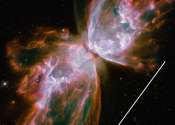Scientists discover a durable but sensitive material for high energy X-ray detection
X-ray technology plays a vital role in medicine and scientific research, providing non-invasive medical imaging and insight into materials. Recent advancements in X-ray technology enable brighter, more intense beams and imaging ...









